The observatory has hosted a variety of lectures. You can view videos of selected presentations by clicking on an image. Please help us continue this series online by donating to the observatory.
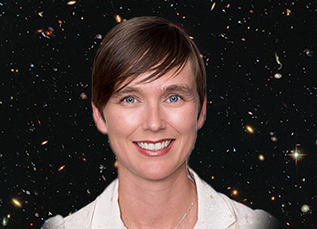
Dr. Robin Elgart – Space Radiation: Health Risks to the Astronaut Corps. “Danger, Will Robinson!” Scientists as well as astronauts have discovered that space really is dangerous. It’s not the ride into space—rockets are pretty reliable now. And it’s not meteors shooting through space, either. It’s just being there, sitting around on a space station, that might be the most dangerous. It’s the radiation that can kill you, give you heart disease, or even cancer years later. This presentation by Dr. Robin Elgart, the Space Radiation Element Scientist in NASA’s Human Research Program at the Johnson Space Center, provides a brief description of the space radiation environment, as well as a summary of a study assessing excess cardiovascular disease or cancer mortality in early NASA astronauts. © 2022
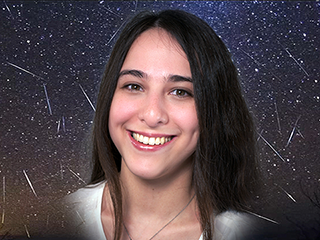
Dr. Alexandra Yep – Meteors, Meteorites, Meteoroids – Oh My! Meteors streaking through the sky are beautiful and mysterious. Have you ever wondered about the types, origins or compositions of meteors? Dr. Alexandra Yep explores their origins, appearances and compositions in this fun and informative presentation. She shares with us when we might next see a meteor, and where we might find meteorites. Dr. Yep is a poet turned astronomer. After earning her BFA in creative writing and classical studies, she dove straight into quantum mechanics on her way to a Ph.D. in astronomy. Now a professor at Agnes Scott University in Atlanta, Georgia, she researches stars and star clusters. © 2022
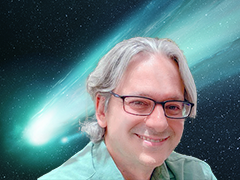
Carl Hergenrother – Observing Comets and the Association of Lunar and Planetary Observers. Carl has discovered four comets and more than a dozen asteroids. Some of the more interesting comets discovered in recent years are presented in this lecture as well as the science contributed by observers with modest backyard equipment. Carl Hergenrother is the Executive Director of the Comets Section of the Association of Lunar and Planetary Observers (ALPO). He has pent most of the past decade working on NASA’s OSIRIS-REx mission to retrieve samples from near-Earth asteroid Bennu. His two primary contributions to OSIRIS-REx were the selection of Bennu as the target and the novel and surprising discovery that Bennu is routinely ejecting small particles of itself into space. He has since moved on to Ascending Node Technologies, LLC, a small business developing spacecraft planning and operations software. © 2022
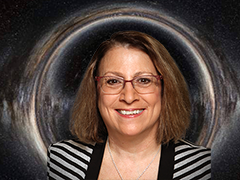
Dr. Lynn Cominsky – Spacetime Symphony: Gravitational Waves and Black Holes. Dr. Cominsky provides an introduction to gravitational waves, black holes and the Laser Interferometer Gravitational-wave Observatory (LIGO) . She also presents the gravitational wave detection results reported to date from LIGO and Virgo (another gravitational wave interferometer). On September 14, 2015, LIGO received the first confirmed gravitational wave signals. This event represents the coalescence of two distant black holes that were previously in mutual orbit. LIGO’s exciting discovery provides direct evidence of what is arguably the last major unconfirmed prediction of Einstein’s General Theory of Relativity. Dr. Lynn Cominsky grew up in the snows of Buffalo, New York, and attended college at Brandeis University, where she studied Chemistry and Physics. She then worked at the Harvard-Smithsonian Center for Astrophysics. When she found out that she could get paid for studying black holes, she went to graduate school in physics at MIT. After getting her PhD there in 1981, she moved to California. She has been on the faculty at Sonoma State University for over 35 years, and chaired the Department of Physics and Astronomy for 15 years. © 2021
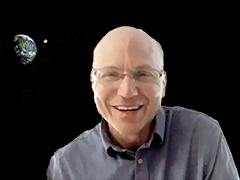
Dr. Darren Williams – Probing the Earth from Astronomical Distances. This presentation asks the question, “What would Earth look like to someone light years away? Would it be a featureless blue dot, or could we possibly see oceans, snow and ice, forests, or even cities through the clouds?” The answer to this question is what astronomers are considering as they collect and interpret the light from distant exoplanets. They are too far and too faint to “see” with advanced telescopes but futuristic telescopes may be able to determine their sizes, spin properties, and atmospheric compositions. Dr. Darren Williams, as a teen, started his future career as an astronomy hobbyist right here at the Martz-Kohl Observatory. In addition to teaching, he studies the climates, orbits, observable characteristics, and dynamical evolution of planets and satellites. His current focus is on the final stages of planet formation, and designs for a new miniature space telescope (The Pale-Blue-Dot Telescope) to remotely observe terrestrial planets at sub-pixel resolution. © 2021
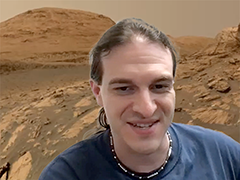
Daniel Krysak – Exploring Mars and Jupiter: the Mars Curiosity Rover and Juno Missions. Daniel is a real Martian, or as close to one as a man can get on Earth. This webinar provides a fun, in-depth look at the various cameras on board both the Mars Science Laboratory (MSL) Curiosity rover on the red planet, and the Juno spacecraft mission to Jupiter. Daniel shows a fascinating gallery of images acquired by both spacecraft throughout their missions. Daniel Krysak grew up in New York State. He graduated from SUNY Potsdam with degrees in both speech communication and archaeology in 2008. He went on to earn a Masters degree in Planetary Volcanology from the University at Buffalo in 2011. Daniel started working at his current company, Malin Space Science Systems, in early 2012 as part of the MSL Curiosity rover operations team. In 2015, he went further into the solar system by working camera operations on the Juno mission to Jupiter. © 2021
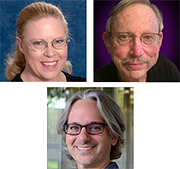
Dolores Hill, Dr. Patrick Miller and Carl Hergenrother – Target NEOs! Searching for and Characterizing Asteroids via Citizen Science. Citizen scientists have always played an important role in astronomy. By capturing images of known asteroids over a long time period, amateur astronomers, students and the public can contribute to the characterization (physical understanding of asteroids) with Target NEOs! and other citizen science programs. Near-Earth Objects (NEOs) include asteroids that have been nudged by the gravitational attraction of nearby planets into orbits that allow them to enter the Earth’s neighborhood. Amateur astronomers and astronomy organizations such as the Martz-Kohl Observatory, have access to research grade instrumentation and have the ability to devote time making observations that can fill in the gaps for professional astronomers who often are able to observe only a few asteroids a few nights per year. Dolores Hill and Carl Hergenrother are co-coordinators of the Astronomical League’s Target NEO Observing Program and Dr. Patrick Miller is Director of the International Astronomical Search Collaboration. © 2021
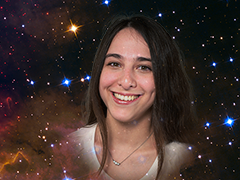
Alexandra Yep – Young Stars Amid External Radiation and Colliding Associations. Ms.Yep is a poet turned astronomer. She first shared her research of The Gum Nebula and young stars as part of The Martz-Kohl Observatory Lecture Series in October, 2020. The observatory was honored to host her Ph.D. dissertation defense on 07 July 2021. As part of her work, she discovered several star clusters in the Gum Nebula which are now known as Yep-1, Yep-2 and Yep-3 and is only the second woman to have earned this naming honor. She also deduced that two distinct stellar associations are in the process of colliding. While her dissertation is about 250 pages of detailed mathematics, observations, charts and simulations, Ms. Yep managed to condense the highlights into an hour presentation. © 2021 Alexandra Yep
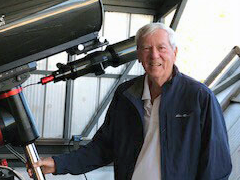
Ted Wolfe – Armchair Stargazing: Remote Astro Imaging in Chile. Ted returned to the Martz-Kohl Observatory this year, in person, with an exciting video tour prepared in collaboration with National Geographic Magazine as well as some of his latest astro images. The videos focused on a trip to his observatory in the Atacama Desert in northern Chile which he can operate remotely from anywhere in the world. But as always, Ted’s ultimate goal is the heavens. His spectacular images of deep space take viewers along to explore the whole universe without ever leaving our planet. He has been an astrophotographer since 1998, when he constructed one of the first remote, robotic, amateur observatories in southern Florida. Ted and his wife Nancy spend winters in Florida and summers at the Chautauqua Institution, here in Western New York. © 2021
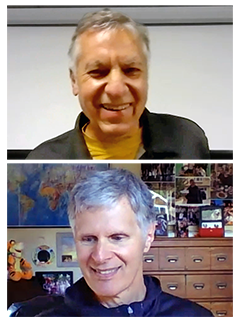
Dan Gray and Howard Banich – Upgrading the Martz-Kohl Observatory & Achieving Diffraction Limited Resolution. Dan Gray is the founder of Sidereal Technology, a cutting edge company focused on developing advanced telescope control systems. Dan Gray has been involved in astronomy, telescope optics and mechanics since the early 80s. Today, Dan continues to create and enhance hardware and software and install systems around the world. Howard Banich is an avid amateur astronomer. He is a Contributing Editor for Sky & Telescope Magazine and has had articles published in Amateur Astronomy Magazine and Amateur Telescope Making Journal. He is the designer and owner of several telescopes, including a 28 inch, f/4 altazimuth Newtonian. This talk illustrates upgrades being installed at the Martz-Kohl Observatory. Dan and Howard also explain and demonstrate how using the latest CCD cameras, taking many exposures, and processing with special software, astronomers are able to approach the diffraction limit of their telescope optics and contribute to citizen science. © 2021
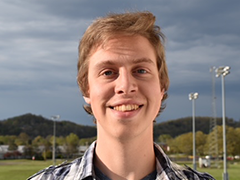
Peter Williams – Machine Learning: Concepts and Use Case in Mapping the Universe. Peter is a Busti, NY local who graduated from State University of New York’s Jamestown Community College (SUNY JCC) in 2016. He went on to earn a Bachelor’s degree in theoretical physics from SUNY Geneseo and a Master’s degree from The Ohio University. He now teaches physics and engineering courses at SUNY JCC. This presentation provides an overview of the types of machine learning algorithms, how they work, and many of their applications. It showcases the use of a neural network to assist the Dark Energy Spectroscopic Instrument (DESI) collaboration in their mission to create the largest ever 3D map of the universe – a task Peter contributed to while in grad school. © 2021
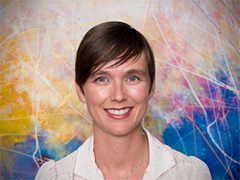
Dr. Robin Elgart – Space Radiation: It’s Everywhere We Want to Be! Dr. Elgart received her B.S. in Microbiology from the University of California at Santa Barbara and her Ph.D. in Biomedical Physics from the University of California at Los Angeles. Before joining NASA’s Human Research Program as the Space Radiation Element Scientist in April 2020, she served as a subject matter expert specializing in space radiation health risks for the NASA Space Radiation Analysis Group as well as a Space Environment Officer for Mission Control Center – Houston. In this talk, Dr. Elgart provides an overview of the space radiation environments, the associated human health risks, and how the Space Radiation Element is actively pursuing a data-driven tactical approach to space radiation protection. © 2021
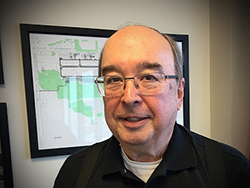
Donn Starkey – The Science of Variable Stars. Donn Starkey has authored over 70 research publications in astronomy and has been cited in over 1,500 publications. He is a council member of the American Association of Variable Star Observers, He has a master’s degree in Astronomy as well a bachelor’s degree in Biology and Chemistry. This webinar explains how stars develop and why some stars spend part of their lifespan being variable stars. Variable stars are stars that change brightness. These strange stars can seem to blink from bright-to-dim, or even on-and-off in brightness by a thousandth of a magnitude (how bright a star looks) to as much as twenty magnitudes brighter and dimmer over periods of a fraction of a second to years, depending on the type of variable star. © 2021
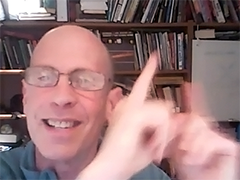
Tom Field – Astronomical Spectroscopy: You Can Almost Touch The Stars. Tom Field has been a Contributing Editor at Sky & Telescope Magazine for the past 7 years. He is the author of the RSpec software (www.rspec-astro.com) which received Sky & Telescope Magazine’s “Hot Product” award in 2011. Despite great distances, astronomers have learned an enormous amount about stars. How? The most common method to study the stars is called spectroscopy, which is the science of analyzing the colorful rainbow spectrum produced by a prism-like device. This talk, with lots of interesting examples, shows you what it’s all about and helps you understand how spectroscopy is used. © 2021
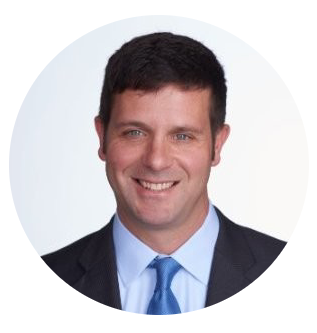
Dr. John Plumb – Space Traffic Management: Preventing Satellite Collisions in Space. Dr. John Plumb has served as a US Navy submarine officer, as a science and military adviser in the US Senate, as an official for missile defense, nuclear weapons, and space policy in the Pentagon, and on the National Security Council staff at the White House. He currently works as the head of government relations for the Aerospace Corporation, the only Federally Funded Research and Development Center (FFRDC) dedicated to the space enterprise. Low earth orbit (LEO) is increasingly congested with satellites and debris. This talk by Dr. John Plumb examines the scope of the problem and potential solutions to reduce the risk of collisions and preserve access to space. © 2020

Alexandra Yep – Young Stars in the Tumultuous Gum Nebula. Alexandra Yep is a poet turned astronomer. She is now pursuing her Ph.D. at Georgia State University, researching young stars in a moderate radiation environment. Stars are not born in isolation. They are born together in a cluster of hundreds or even thousands of stars. Ms. Yep seeks to answer these questions: How are stars and their young planets influenced by neighboring stars? How are clusters of stars influenced by neighboring clusters? © 2020

Walter W. Pickut – On the International Space Station, What are the Russians Up To? Walter W. Pickut is the contributing editor at the Jamestown Gazette, an author, and an investigative reporter. He has earned BS degrees in biology and in communication, an MS degree from Fairleigh-Dickenson University in NJ, and graduate training in mass communication at SUNY Buffalo. Having recently completed extensive studies in Soviet Cold War espionage, Walt now finds this investigation of Russian cosmonauts on the International Space Station very revealing. © 2020
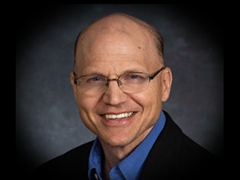
Dr. Darren Williams – Taking the Temperature of an Extrasolar Planet. Dr. Williams is a professor of Astronomy and Astrophysics, along with planetary science, at the Penn State Behrend Campus in Erie, Pennsylvania. Dr. Williams discusses how and what we know about extrasolar planet temperatures as well as the latest news in the field of exoplanets. © 2020
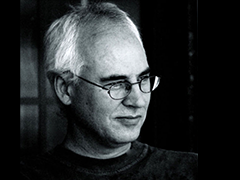
Dr. James Spann – Overview of the Heliophysics missions and their involvement in the NASA manned missions. Jim Spann, PhD, is the Space Weather Lead, Heliophysics Division at NASA. He has worked since March of 2019 at The Science Mission Directorate, Heliophysics Division of NASA where they study the nature of the Sun and how it influences the nature of space. Space weather can affect our astronauts, communication, satellites, and power grids. © 2020
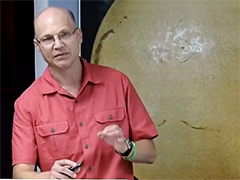
Dr. Darren Williams – Astronomical Contributors to Climate Change. Dr. Williams is a professor of Astronomy and Astrophysics, along with planetary science, at the Penn State Behrend Campus in Erie, Pennsylvania. As a teen, Dr. Williams started his future career endeavors as an astronomy hobbyist at the Martz-Kohl Observatory. Currently, Dr. Williams is studying the dynamics surrounding the orbits of the planets and moon as well as the evolution of the solar system. © 2019

Laurie Abadie – Lunar Astronauts: Preparing America’s Next Moon Landing Crew. Laurie Abadie is a human space flight specialist with NASA. Her title is Deputy Manager for Communications and she is part of a team for NASA’s Human Research Program, now working to develop the moon landing crew for the planned 2024 U.S. moon landing expedition. © 2019
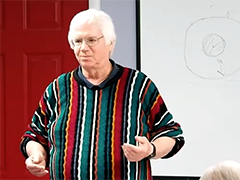
Mike Stafford – The Birth and Death of Stars. Mike Stafford is a former instructor of physics at Penn State Behrend. He has also taught at Mercyhurst and is currently an adjunct instructor of physics at Gannon University. Outside of physics, he is a private pilot, licensed parachute rigger and currently inactive expert parachutist. He is also an Extra Class ham radio licensee. © 2019